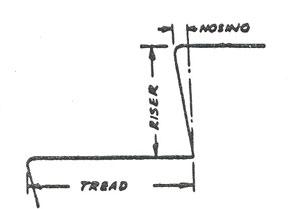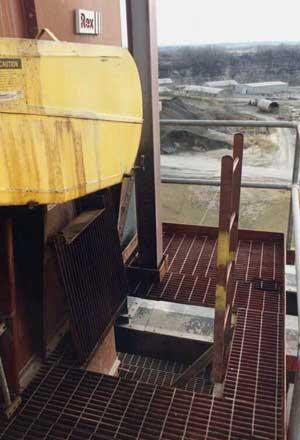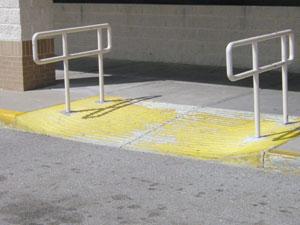Safety and Human Factors analsys includeds studies in the following areas:
|
|
Slips, Trips and Falls
Statistical records provided by the National Safety Council have for years listed accidental deaths resulting from falls as the No.2 cause of accidental death. Thousands of people in the United States die as a result of falling from one level to another or on the same level. No age groups are isolated from this type of accidental death. Potential fall hazards lurk in every workplace, home, shopping facility, dining area, etc. Government organizations, safety engineers, human factors engineers,
and other professionals put forth a great deal of effort in code development and other accident-prevention techniques designed to either eliminate recognized fall hazards or, at the very least, reduce the chance that a recognized fall hazard will lead to an accident.
Even with this effort and under the most rigorously controlled safety code and standard enforcement, accidents occur. The one variable hardest to predict or control is that of human behavior.
People have accidents when they think they are safe. When a hazard is recognized, the normal human reaction is to be cautious. One fails to be cautious in the presence of a serious hazard only when something has interfered with the normal perception of danger. This most often occurs because of one of two reasons:
- One (or more) environmental cue or particular detail is missing from the environment to indicate danger, such as a change of elevation in a dimly lit room, or –
- Even with the presence of environmental cues, such as adequate lighting or warnings, one fails to recognize a hazard, behaves accordingly, and an accident occurs
Case Example: THE SINGLE-STEP ACCIDENT
Consider the single step. Single steps can be found at numerous locations in shopping malls, offices, restaurants, stores, hotels, movie theaters, churches, etc. Research from the National Bureau of Standards suggests that single steps, two-riser stairs, and encroachments may not be noticed by the person approaching them, especially from above. Consensus building codes, such as BOCA, consider the presence of a single step, 12 inches high or less in an exit or an exit access corridor, to be a hazard.
Let us look at and generally analyze two single-step accident scenarios.
SCENARIO ONE
A person is walking in a carpeted hallway; there is a change of elevation in the hallway toward which he/she is walking, making the untraveled walking surface six inches lower than the surface on which he/she is presently walking; the color of the carpet throughout the hallway is the same light gray color and there is no distinguishable overhead lighting intensity anywhere along the corridor. This individual reaches the location of elevation change while walking in a normal walking gait, takes the next step, and falls to the floor with a severe leg injury. Based only on those facts:
- Were there any visual cues present in the environment to show the change of elevation?
- Was this accident a result of a hazard not easily perceived?
SCENARIO TWO
A person is walking in a carpeted hallway; there is a change of elevation in the hallway toward which he/she is walking, making the untraveled walking surface six inches lower than the surface on which he/she is presently walking; the color of the carpet on the upper level is light gray; the color of the carpet on the lower level is dark red; there is an overhead light directly above the elevation change; and there is a four-inch yellow and black strip or nosing at the end of the upper walking surface. This individual reaches the location of the elevation change while walking in a normal walking gait, takes the next step, and falls to the floor with a severe leg injury. Based only on those facts:
- Were there any visual cues present in the environment to show the change of elevation?
- Was this accident a result of a hazard not easily perceived?
ANALYSIS

If, after reviewing the two fall accident scenarios above, you believe that in each case environmental visual cues could have an effect on human behavior relating to the accident, then you have crossed the threshold from traditional engineering and safety philosophy into the realm of human factors engineering.
An investigation of a slip, trip, or fall accident in any location or environment begins with principles of recognized safety practices including research of building codes and safety standards. However, to be thorough, a systematic fall accident investigator must incorporate the human factor– the knowledge of the principles of human behavior, physiology, and the psychology of perception and group dynamics– into his/her analysis and conclusions regarding the cause of any fall accident!


